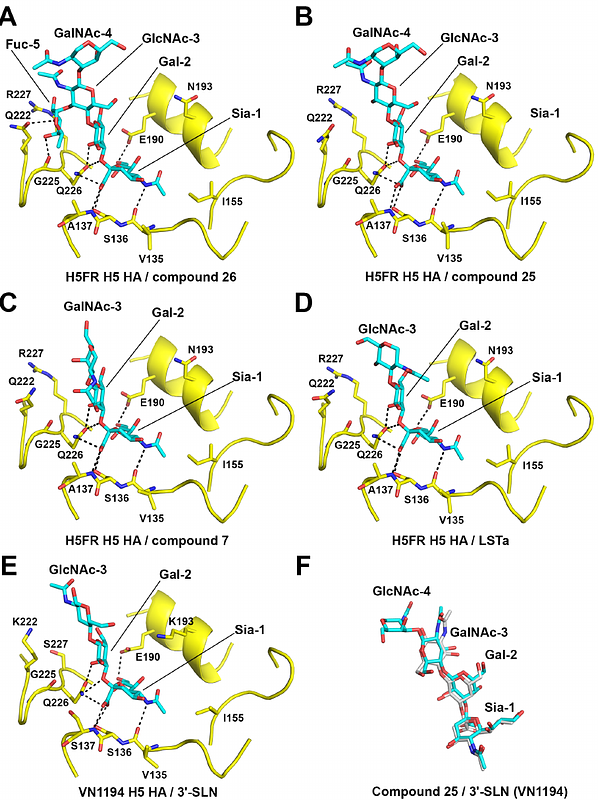The receptor binding properties of H5Nx influenza A viruses have evolved to promiscuously bind to avian-type mucin-like O-glycans

The receptor binding properties of H5Nx influenza A viruses have evolved to promiscuously bind to avian-type mucin-like O-glycans
Weber, J.; Ponse, N. L. D.; Zhu, X.; Rios Carrasco, M.; Han, A. X.; Funk, M.; Lin, T.-H.; Gabarroca Garcia, A.; Spruit, C. M.; Yu, W.; Zhang, D.; Wilson, I. A.; Richard, M.; Boons, G.-J.; de Vries, R. P.
AbstractHighly pathogenic H5Nx influenza A viruses are causing unprecedented, season-independent outbreaks across avian and mammalian species, including dairy cattle, a novel reservoir. The sialoside-binding properties of influenza A hemagglutinin (HA) are strongly related to its ability to infect and transmit between hosts. Mucin-like O-glycans, omnipresent in respiratory tracts, have been understudied as viral receptors due to their complexity. To address this, we synthesized 25 O-linked glycans with diverse sialosides, including modifications by fucosides and sulfates. Our findings reveal that H5Nx 2.3.4.4b viruses uniquely bind core 3 sialyl-Lewisx and Sia-Gal-{beta}3GalNAc, glycans not recognized by classical H5 or other avian viruses. By determining its crystal structure, we resolved the structural features of both structures in an H5 hemagglutinin (HA) from a 2016 2.3.4.4b virus. While these viruses do not bind human-type receptors, their promiscuous receptor specificity enhances binding to human tracheal tissues, suggesting that O-glycan recognition contributes to their zoonotic potential.